A relaxing and quiet itinerary among the high burgs of Macerata
Slow tour through the Apennines of Modena
Discover Fanano and its surroundings
by Vincent & Silvia.
An amazing trip discovering the many attractions of the Apennines of Modena, from the bilberry to the Parmigiano Reggiano, from the city centre to the top of the mountain…
Day 1
Our tour is aimed at rediscovering Italian villages of the Modena area and is part of a bigger event, called Piccola Grande Italia (little big Italy). It starts on a Saturday morning in Bologna. We meet Alessandra and Valerio from Legambiente Emilia Romagna at 8 o’clock in front of the station. We get into their car and… the adventure begins! We pass by the cherry fields of Vignola and soon we reach the Apennines of Modena and our first destination: the city of Fanano.
Our first activity is a convention about the future of the mirtillo nero –Vaccinium Myrtillus L– from the Modena area. The mirtillo nero, that is the bilberry, is very healthy and tasteful. The speakers of the convention talk about sustainability, certification, local development and curatives properties of the bilberry. With the goal to create a strong brand recognized all over the world, like the famous DOP vinegar of Modena. But it makes us wondering: where is the bilberry and how does it taste?
As soon as the presentation is over, we have a buffet in the municipal building. The buffet consists of local products and we taste the bilberry in many forms: in an omelette, in cakes, yoghurt, ricotta cheese and many others. Next to the bilberries there are a lot of local cheeses, such as a 60 months matured Parmigiano Reggiano, a Caciotta with peppers & creamy cheeses. The very old Parmigiano Reggiano has such an intense and rich taste, it is definitely worth trying!
- Omelette with bilberry
- Ricotta with bilberry
- 60 months old Parmigiano
After lunch we visit I Rodi, a farm business. They explain us what the company is making and that a lot of manual labour is needed. Their main product is the bilberry, but they also produce raspberries, strawberries, blackberries and black currants. However, only a small amount of the fruits is sold fresh, the biggest part is transformed into delicious products like marmalade, juice, dried fruits, muesli & extract. Around the farm we can see the fields with raspberry and strawberry plants, but where are the bilberry plants?
As it turned out, the bilberry plants grow spontaneously on the top of the mountains above the tree line. The nice and very friendly people of I Rodi bring us to the top of the mountain, to the Croce Arcana pass. Driving up on a very steep road we pass by one of the springs of Mount Cimone and we can try the very cold but fresh water directly from its source!
On the top of the mountain we enjoy a beautiful view over the whole area. The mountain lies on the border between the Emilia-Romagna region and the Tuscany region. They say that during very sunny days you can even admire both the Tuscan and the Emilia Romagna coasts.
- I Rodi’s fields
- On the way to Croce Arcana pass
We discover that the bilberry is not growing on reachable fields, but on steep mountain slopes that are very tough to harvest. The harvest usually lasts one month and a half every summer. And the harvesters carry up to 50 kilos of bilberries a day! Between the bilberry plants there are rare and protected blue flowers and also fake bilberries, called “Mirtillo del Lupo-wolf’s bilberries”.
And now it’s time to visit the city centre of Fanano. We start the tour in the municipal building, where we can see small statues made of sandstone from the local quarry and pietra serena. These small statues happen to be models for the Symposium of Fanano, a contest in which the models were made on its intended size. After that we visit the centre of Fanano, where a lot of the bigger statues are placed. Some statues are integrated with local buildings and some statues are standing in the middle of the squares. Finally we climb the bell tower of the city.
- Fanano’s tower
- View from Fanano’s tower
- Aperitivo in Fanano
In the evening we have a lot of food from the whole Modena area as part of an aperitivo. An aperitivo should be an appetizer, but in our case (as it usually turns out in Italy) the aperitivo itself is more than enough for our stomachs! Typical dishes like gnocco fritto (fried dough), crescentine (little breads), salumi (meat like ham and salami), local mushrooms, Parmigiano Reggiano cheese & lardo (a spread made of fat and herbs). Everything served with water and Lambrusco wine from this region. We also find out that the gnocco fritto we are eating ranked 4th in the contest “Gnocco D’Oro” that took place in Modena.
After dinner, Legambiente shows us a documentary (“Parchi di Vita”) they made about jobs that do not exist anymore, in particular they talk about the salt pan collectors of the Po Delta, the eel fishermen and the chestnut growers. All of these jobs once existed in the Emilia Romagna area. It’s very nice to see that old people from Pianaccio that came to watch the documentary really enjoyed it; once they were chestnut growers themselves, and tonight they brought us dried chestnuts and flour made from chestnuts. The dried chestnut has the smell of smoked food but it’s sweet like a candy when eating it.
Just after midnight we arrive at the Agriturismo del Cimone, which is located at 1200 meters above sea level, between Fanano and Sestola.
Day 2
In the morning we have breakfast in the agriturismo. All the homemade jams, cookies and cakes are simply delicious. After we go on a hike to the area of Calvanella with the owner of the agriturismo, who is very nice and friendly. We are walking uphill when a team of beautiful horses suddenly passes us. They have brown coat and white mane and tail and we learn that they are part of the activities the farmhouse organises for children. Entering the woods, we see that the trees around us are beech trees, larches and spruces and the more we walk the wilder the nature and the more difficult the hike. But the view is worth the effort. In winter in this area people ski and snowboard, while in summer the ski lifts are used by mountain bikers that cycle down the mountain.
After this three hours walk, we have a so-called 0 km lunch at the Agriturismo. Zero kilometer means that all the food is produced nearby, therefore having the freshest products as possible without the need of transportation. They serve vegetables, cheeses, salumi & bread as an appetizer, all made in their own facilities! As the main course they serve homemade pasta with ham and vegetables, and tortellini filled with cheese. Then we have several types of meat with vegetables and potatoes. And finally, the cherry on the cake is the panna cotta with bilberry.
- Breakfast at the Agriturismo del Cimone
- Bilberry panna cotta
- Agriturismo’s horses
At last we stop at the cheese factory Latteria del Cimone to see how they make the 60 months old Parmigiano Reggiano (tasted yesterday), other cheeses and yoghurts. At the factory they explain us that they are forced to stop making the 60 months old Parmigiano Reggiano as it is too expensive and there is no market that is willing to pay for it. The distributors want to pay the same price for the Parmigiano as they pay for the Ricotta. However, it’s much more labour intensive and expensive to produce the Parmigiano. Nevertheless, we see some of the Parmigiano Reggiano cheeses that are maturing, but the biggest stock is kept somewhere else for insurance reasons. Of course we can try some more pieces of this delicious rare cheese!
- Hike
- hike in the woods
- dog drinking fresh water
Very tired but highly satisfied with the discovered tastes and the beautiful memories we leave and head back to Bologna.
Thanks Legambiente for letting us discover the beauties and the delicacies of this area!
Vincent van Valen & Silvia Palmarini

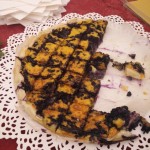
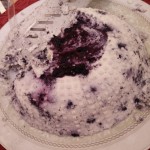
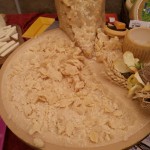

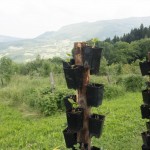
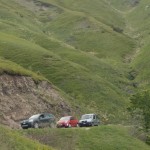
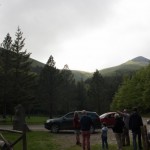
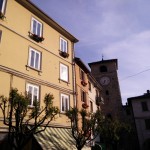
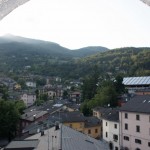
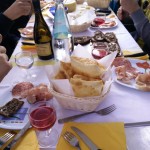
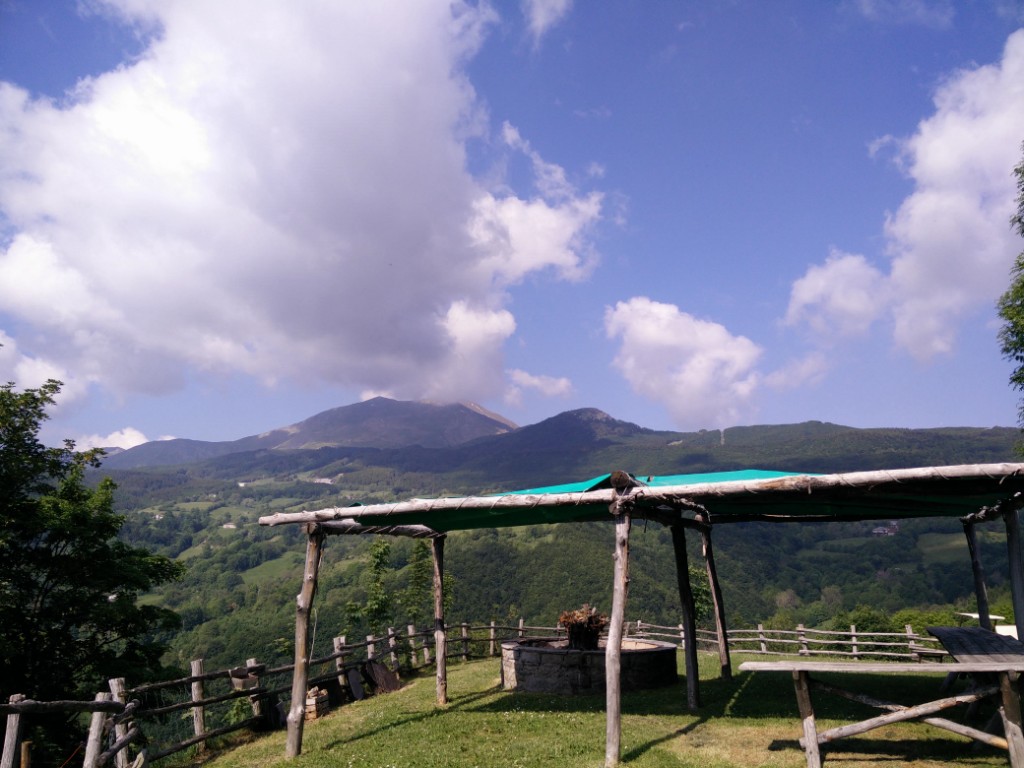
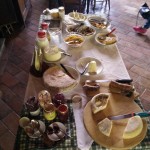
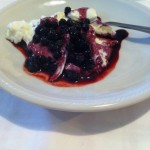
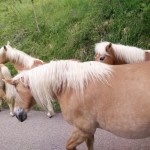
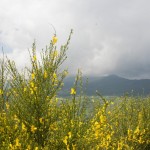
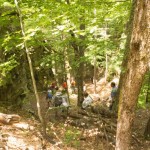
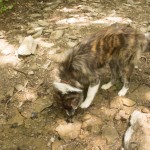
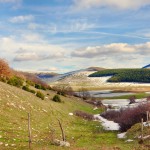
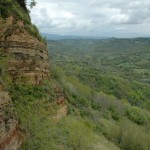

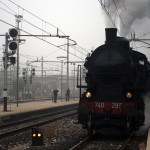










2 Comments
Legambiente Onlus
Thank you for travelling with us, helping us to spread the word about the beauty of these places, and for having a good time!
vincentvanvalen
Thank you for having us! The trip was full of surprises, delicious food and nice people. Let’s hope the area stays that way, and other people find about it as well!